Grinding Coffee Beans: Density and Roast Matter
January 06, 2023

It’s All About Density
Once green coffee beans are thrown into the roaster, they begin to change color as they’re exposed to prolonged amounts of high heat. The color spectrum that roasters produce ranges from light, medium, medium-dark, and dark roasts, each coming with its unique set of aromatic properties. Density is one of the key differences observed between roasts that should also be factored in when grinding your own coffee at home.Because dark roasts are exposed to heat for longer periods of time, much of the bean’s natural moisture is extracted in the process. This creates a more brittle coffee bean that breaks up more easily in a grinder. The opposite applies to the lighter roasts since they have a higher amount of water content and are smaller in size than their darker counterparts. This creates a difference in density between coffee roasts, ultimately influencing surface tension in the brewing process.

How To Grind Different Roasts
To ensure a solid extraction of flavor in your coffee, it’s important to consider surface area when choosing a roast. Lighter roasts have a higher density than dark roasts; therefore, they can be ground more finely. With their lower density and brittle texture, darker roasts fare better as a coarser grind.Density affects coffee’s solubility when exposed to water, and adjusting your coffee grinder accordingly will help compensate for each roast’s shortcomings. It’s helpful to imagine this relationship between density and grind size as a balancing act that leads to the same desired result: a full, flavorful extraction.
The density of your coffee roast will also be noticeable in the grinding process. Because lighter roasts have a higher density, it’s expected that your coffee grinder will take more time to process your beans. This is particularly noticeable when grinding espresso since your machine will be working harder to break denser beans down to such a fine consistency. If you find yourself struggling to reach a super fine consistency, it’s usually the nature of light roasts being difficult to break down.
Using mechanical coffee grinders, such as our Chestnut Grinder with stainless steel burr plates, will provide more control over the final texture of your grounds. For a more automated experience, our soon to come Wilfa Uniform Grinder, which comes with 41 grind steps to closely monitor the size of your coffee granules, will offer both consistency and ease during this coffee brewing step.
Stick to darker roasts for an easier grind when making espresso-style coffee. However, on the bright side, lighter roasts typically produce grounds with less static as they leave your grinder, leading to a less messy process.

Updose When Going Light
Similar to the balancing act between roast and grind size, coffee dosages are another area that can be adjusted to reach desired results. Light roasted espressos have gained popularity in recent years amongst coffee drinkers who prefer its bright acidic notes rather than classic espresso’s earthier and more bitter flavors. However, baristas often ran into the issue of uneven extractions when working with light roasts with higher densities than typical espresso.The solution eventually came in the form of updosing, or increasing the ratio of grounds to coffee when extracting a shot. By doing so, baristas can compensate for light roasts’ lower density and create higher surface tension in the brewing process. It should be noted, however, that this method differs from the ristretto, which typically consists of a short-pulled espresso shot with lower quantities of water.
At this time, all of Lardera's coffees are light-medium roasts. Enjoy!
